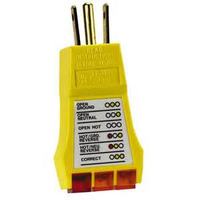Ericwatson
Banned
How can a technician know if a piece of equipment before plugging it into the wall that the hot and neutral wires have been reversed internal inside the equipment. Some test fixtures or test equipment has either their hot and neutral wires reversed, no safety chassis ground or the ground is above zero volts. I have to take a fluke volts meter and measure the DC and AC voltage from circuit board ground of the test fixture or ground of the circuit board of the test equipment and measure the voltage difference between the grounds or chassis grounds of each other. I measure the AC and DC voltage difference from circuit board ground#1 to circuit board ground#2 and chassis#1 to chassis#2. The oscilloscope will short out when probing test point on a circuit board or on a test fixture test points. Why it shorts out is because it can be either of these problems. I know if I use an isolating transformer this will solve all these problems, but how can a technician measure before plugging it into the wall if the circuit under test, test fixture or piece of equipment has any of these issues. Some circuits pcb ground gets connected to the AC line transformers primary neutral wire. Other circuits pcb ground gets connected to the AC line transformers secondary negative. The circuit under test Hot and Neutral wires are reversed.The circuit under test has no Safety ground .The circuit under tests grounds are above ground zero volts. All of these problems are ground loops issues it seems.
